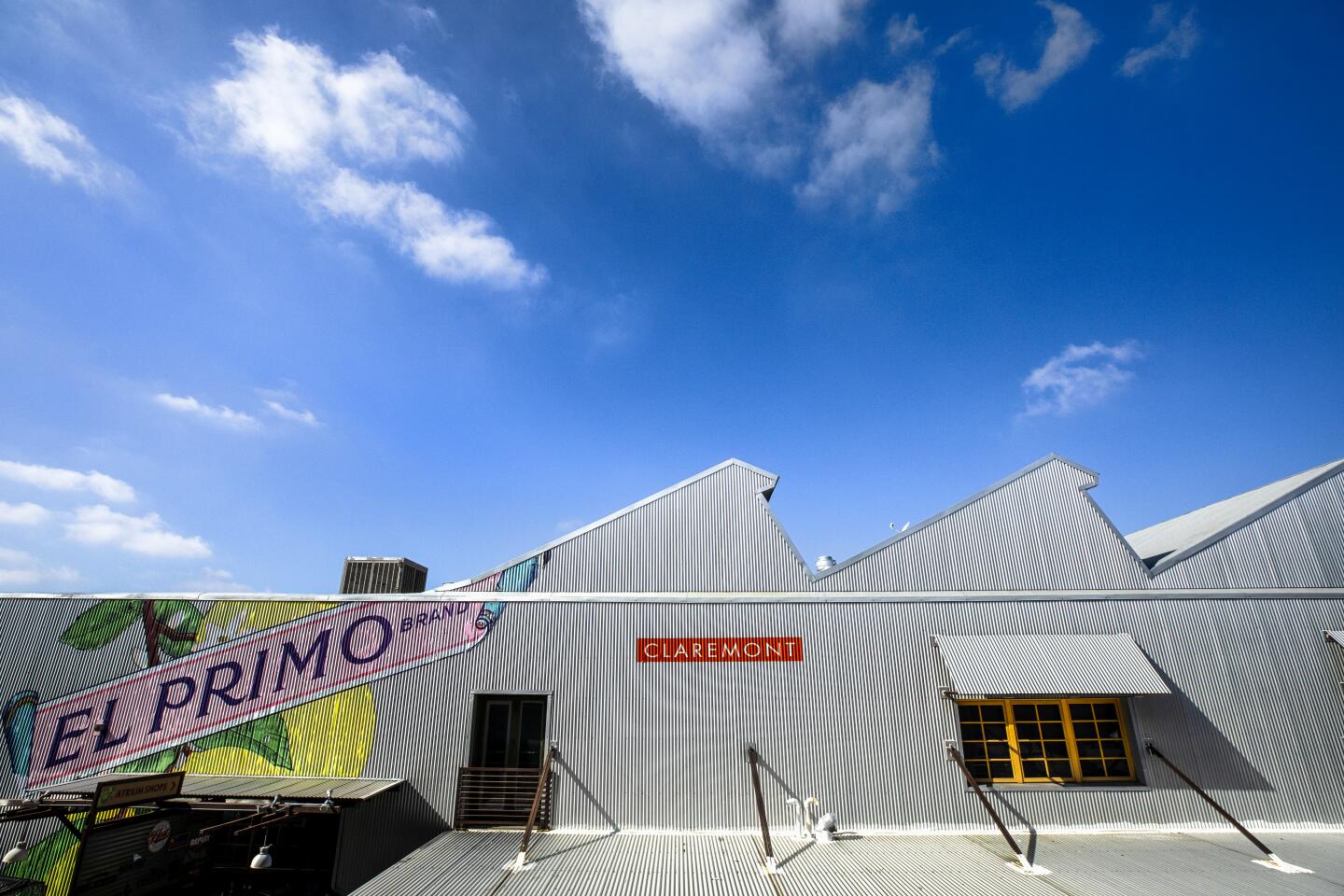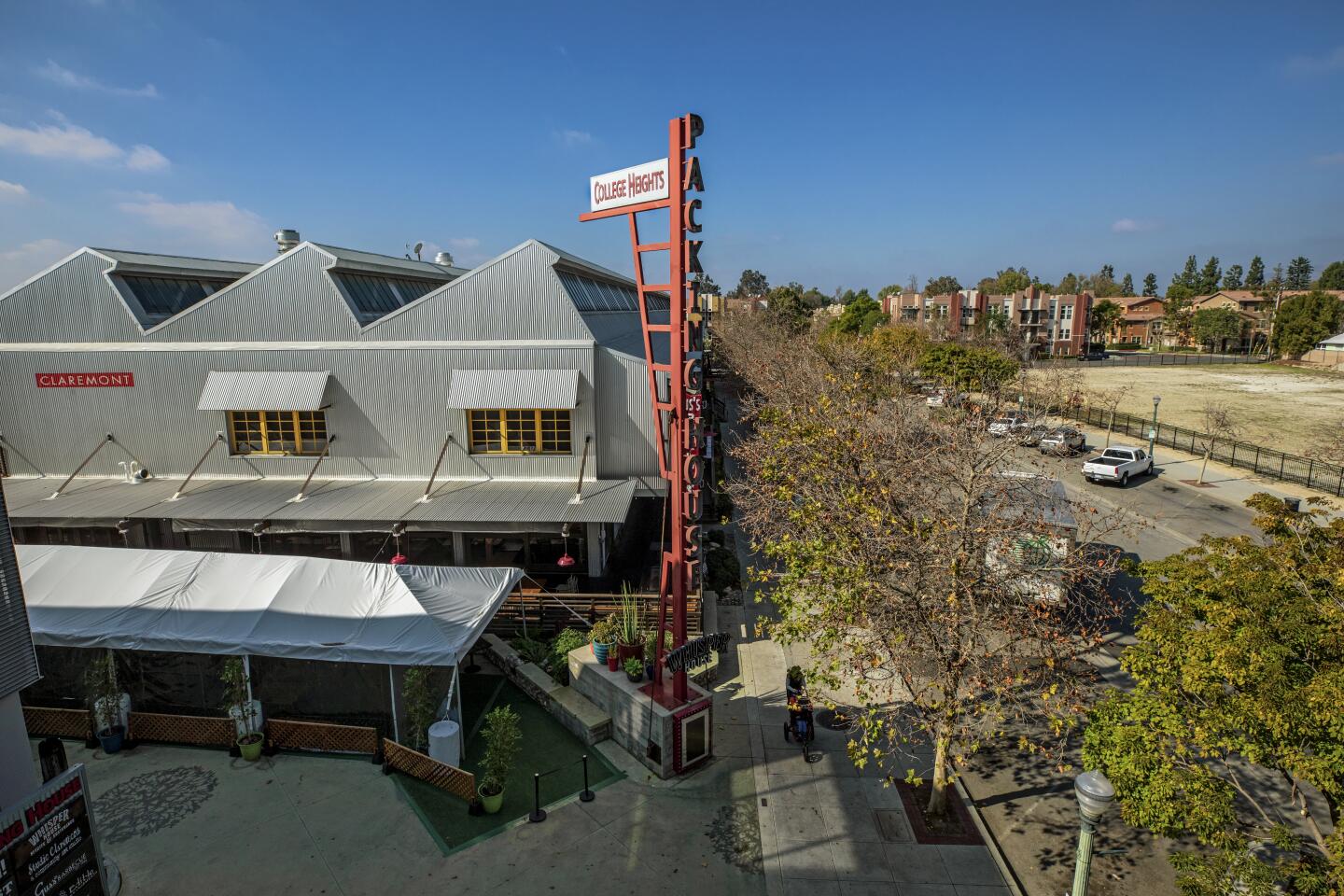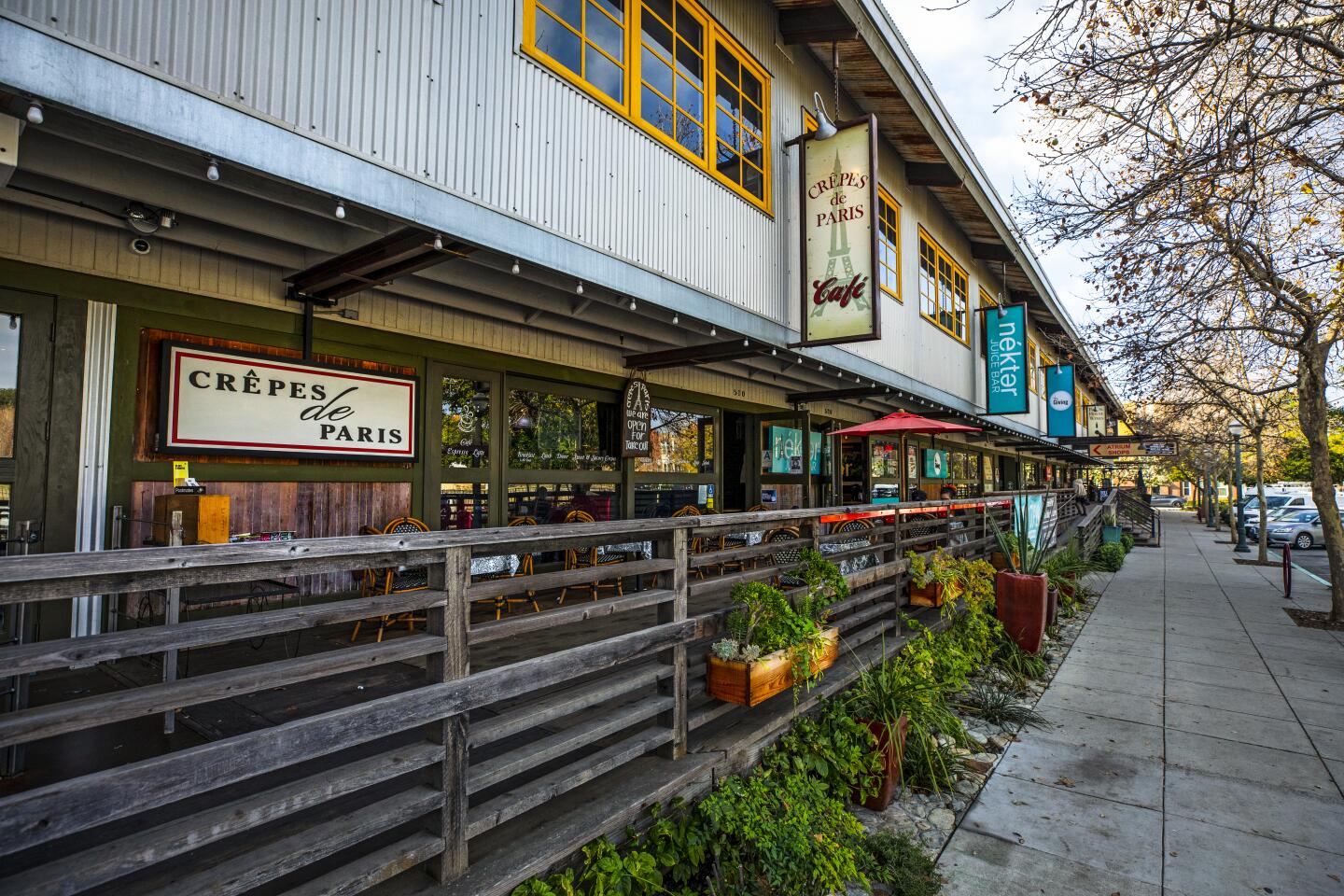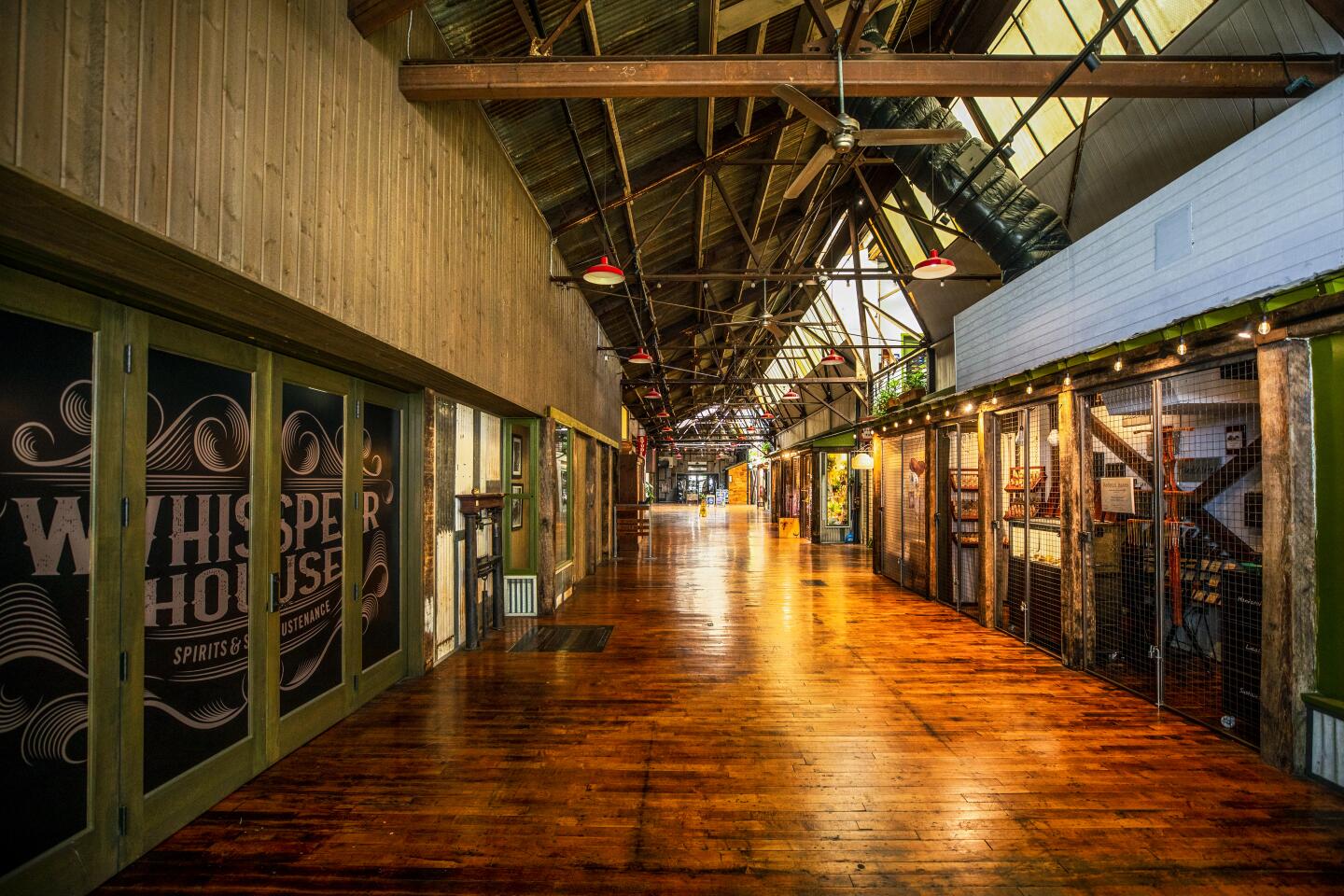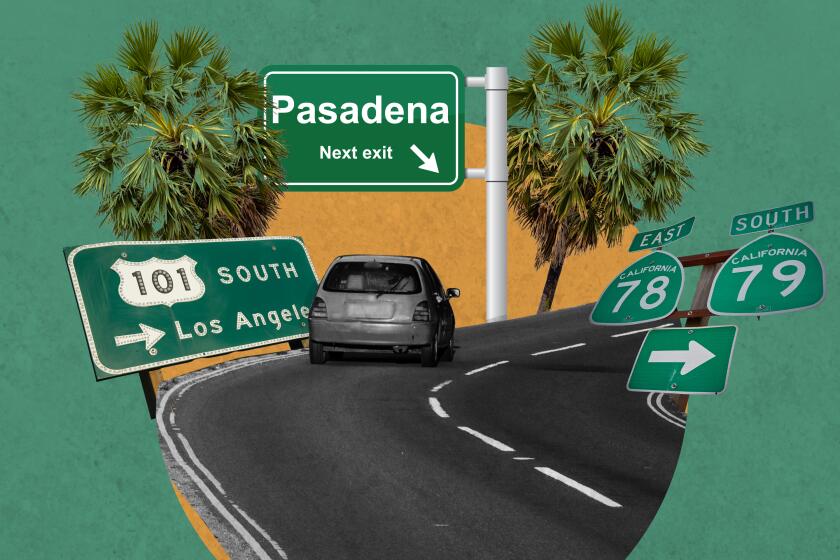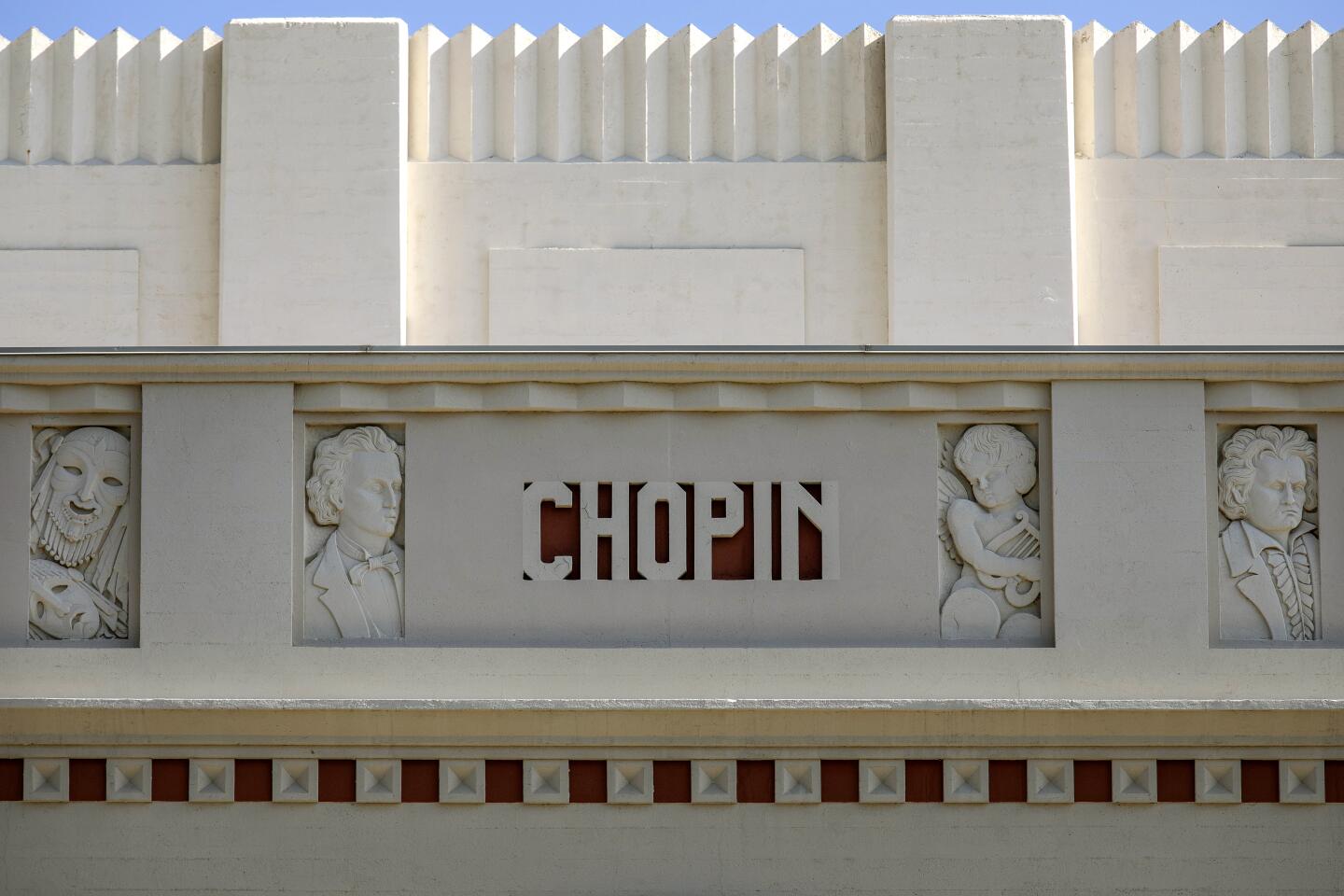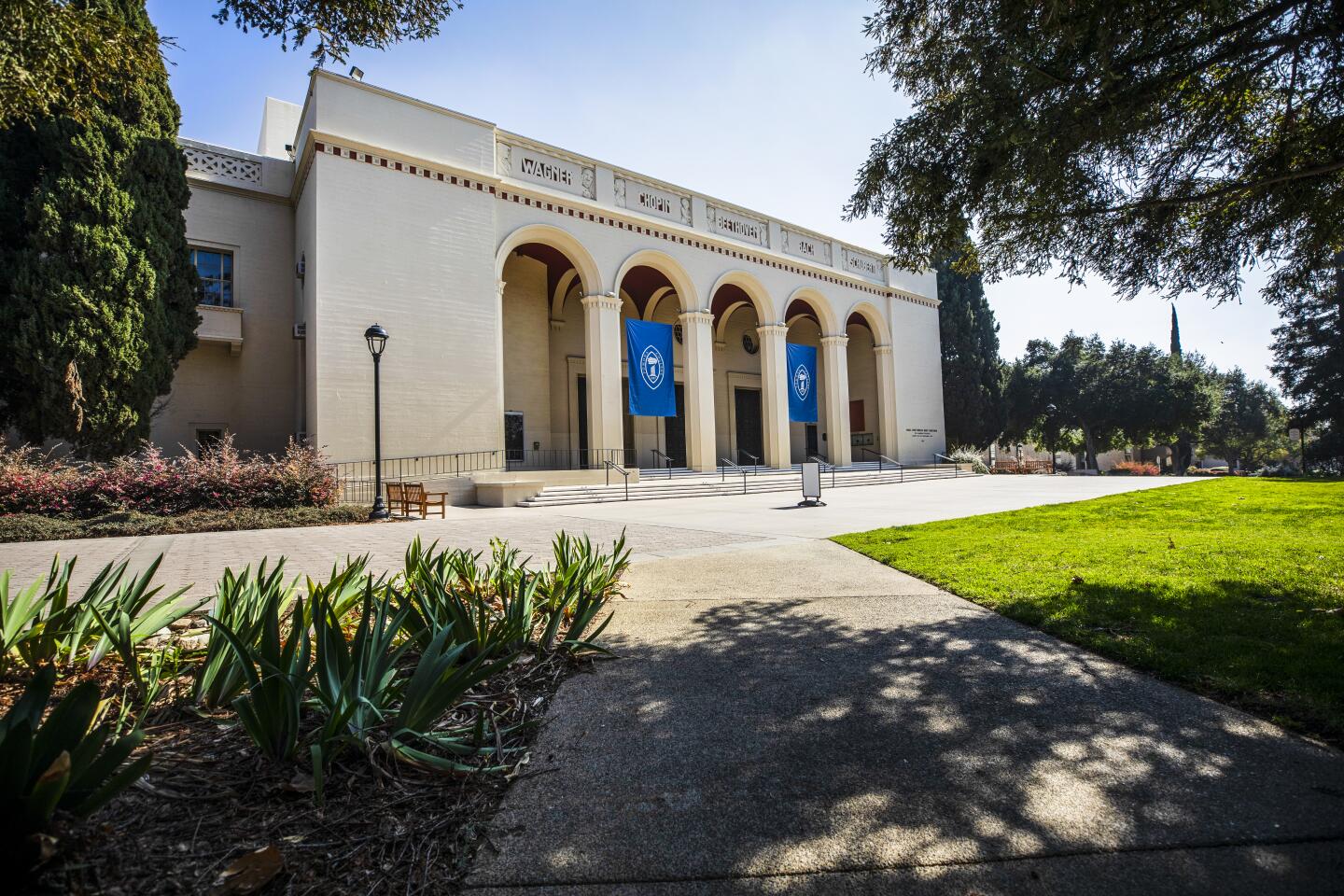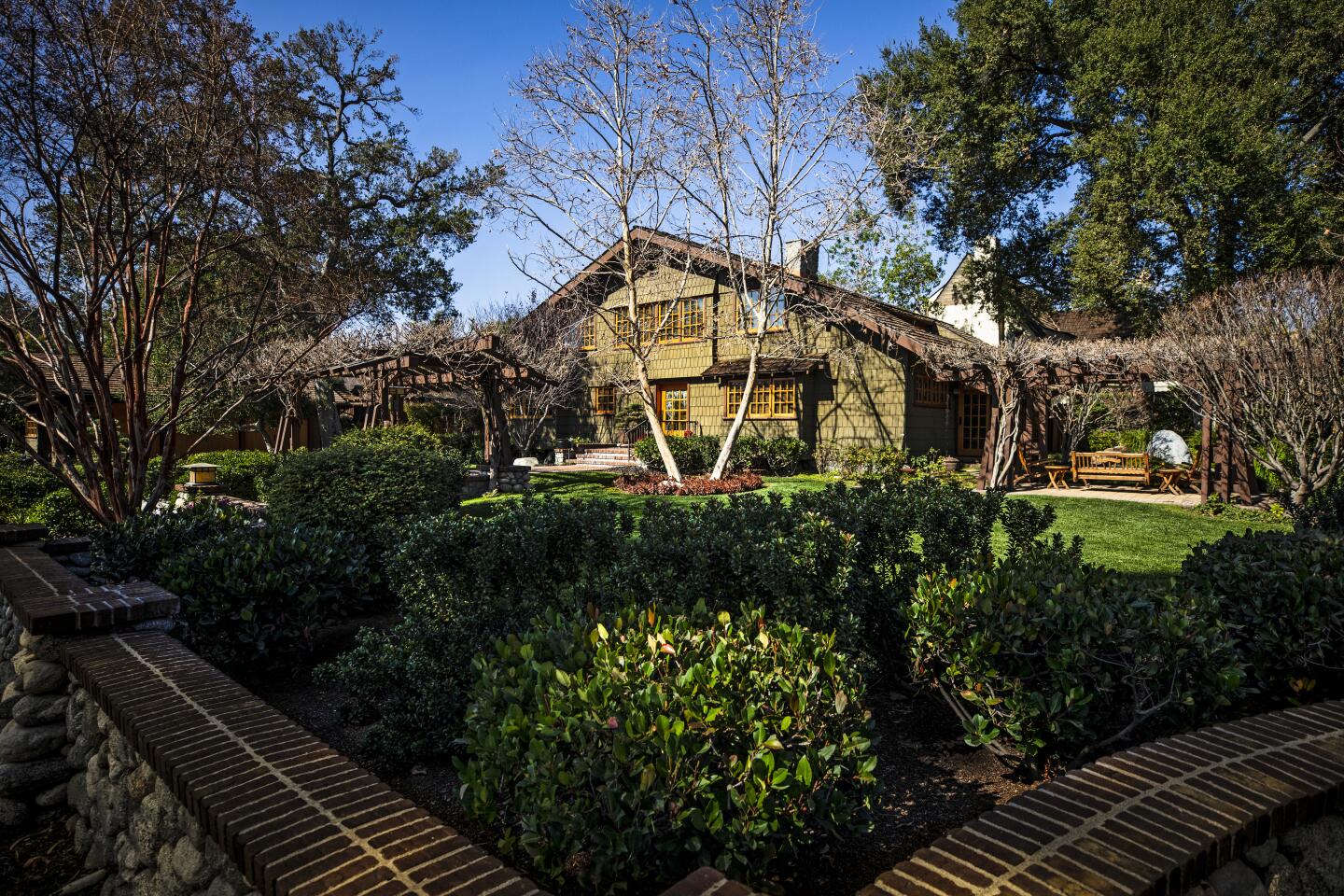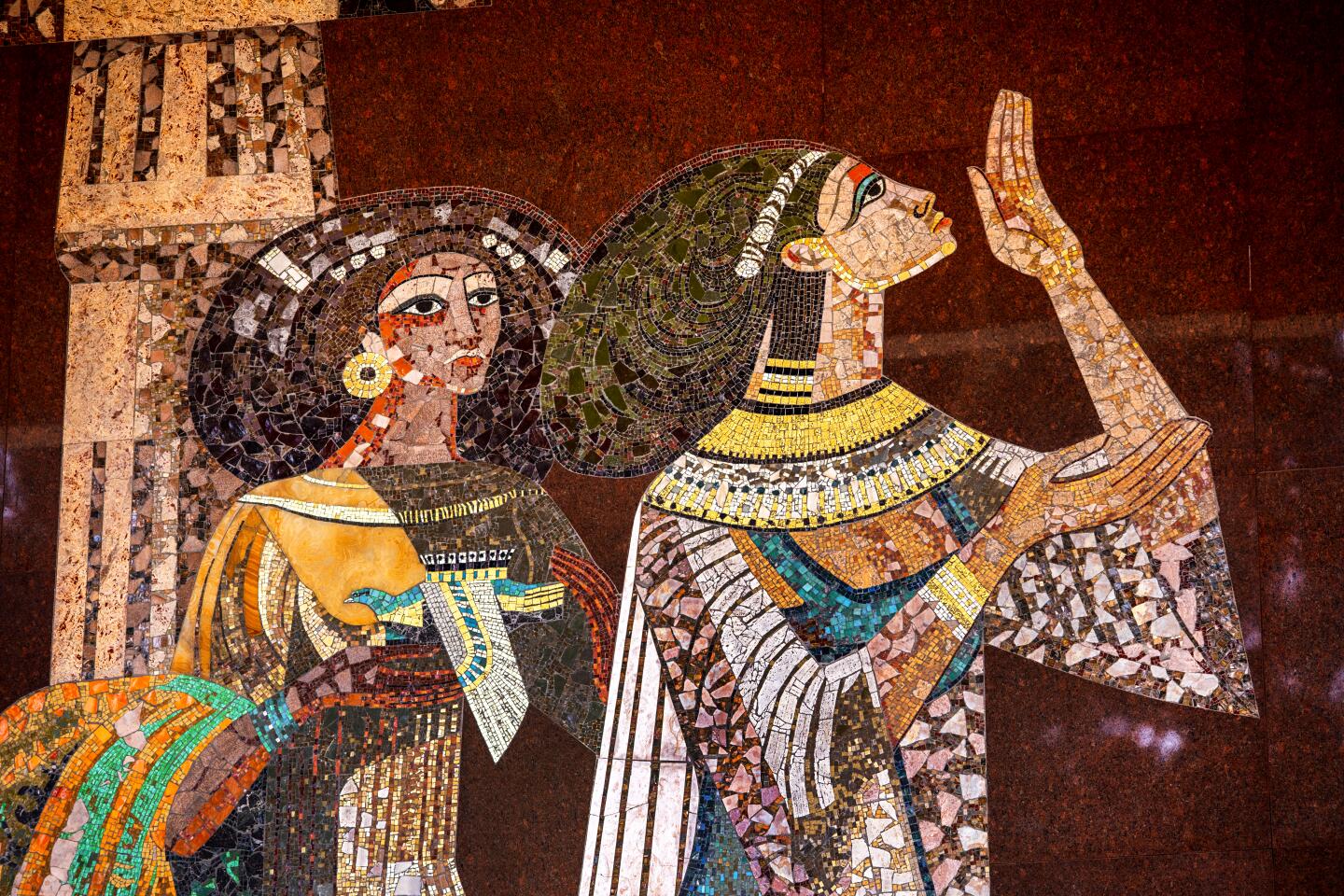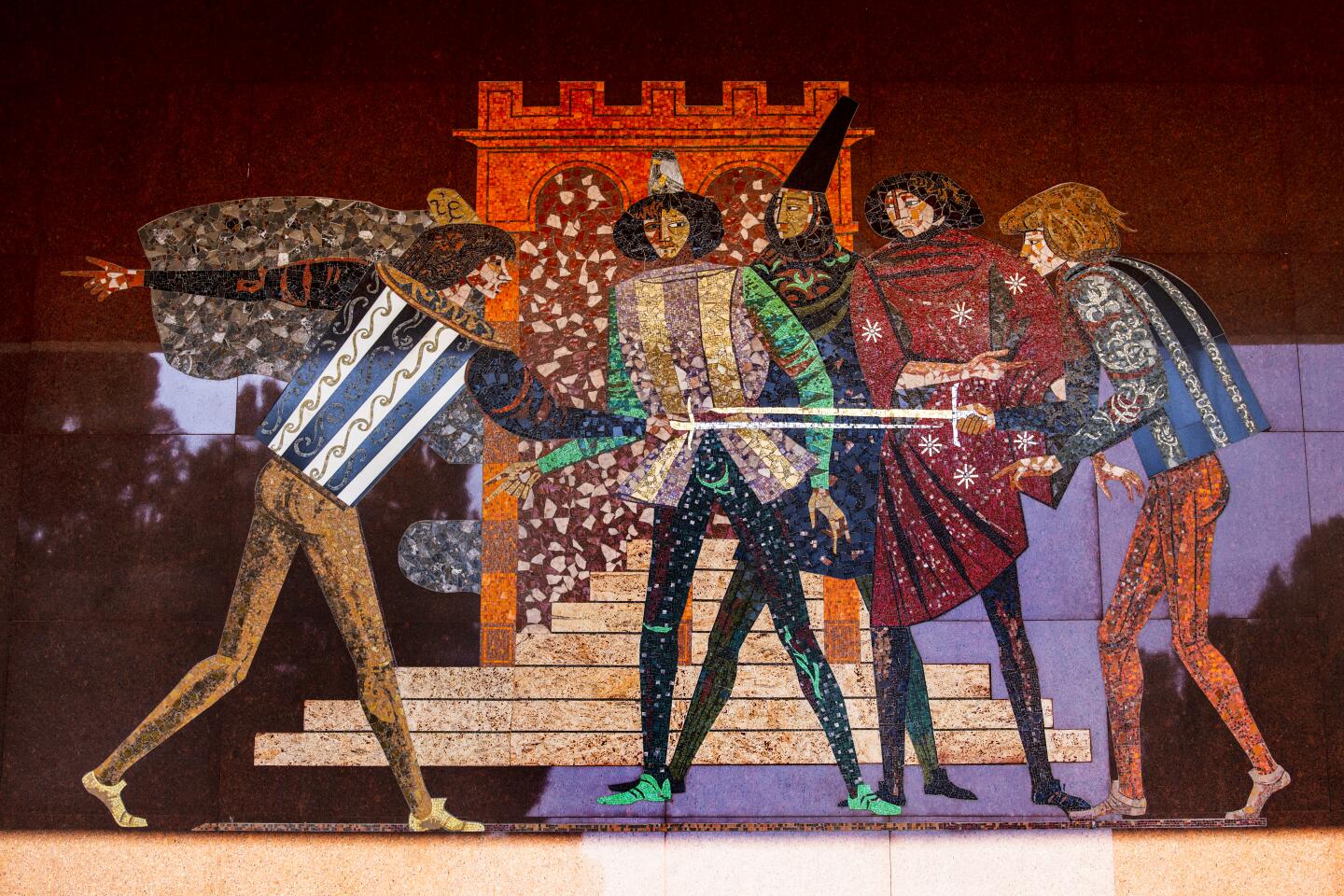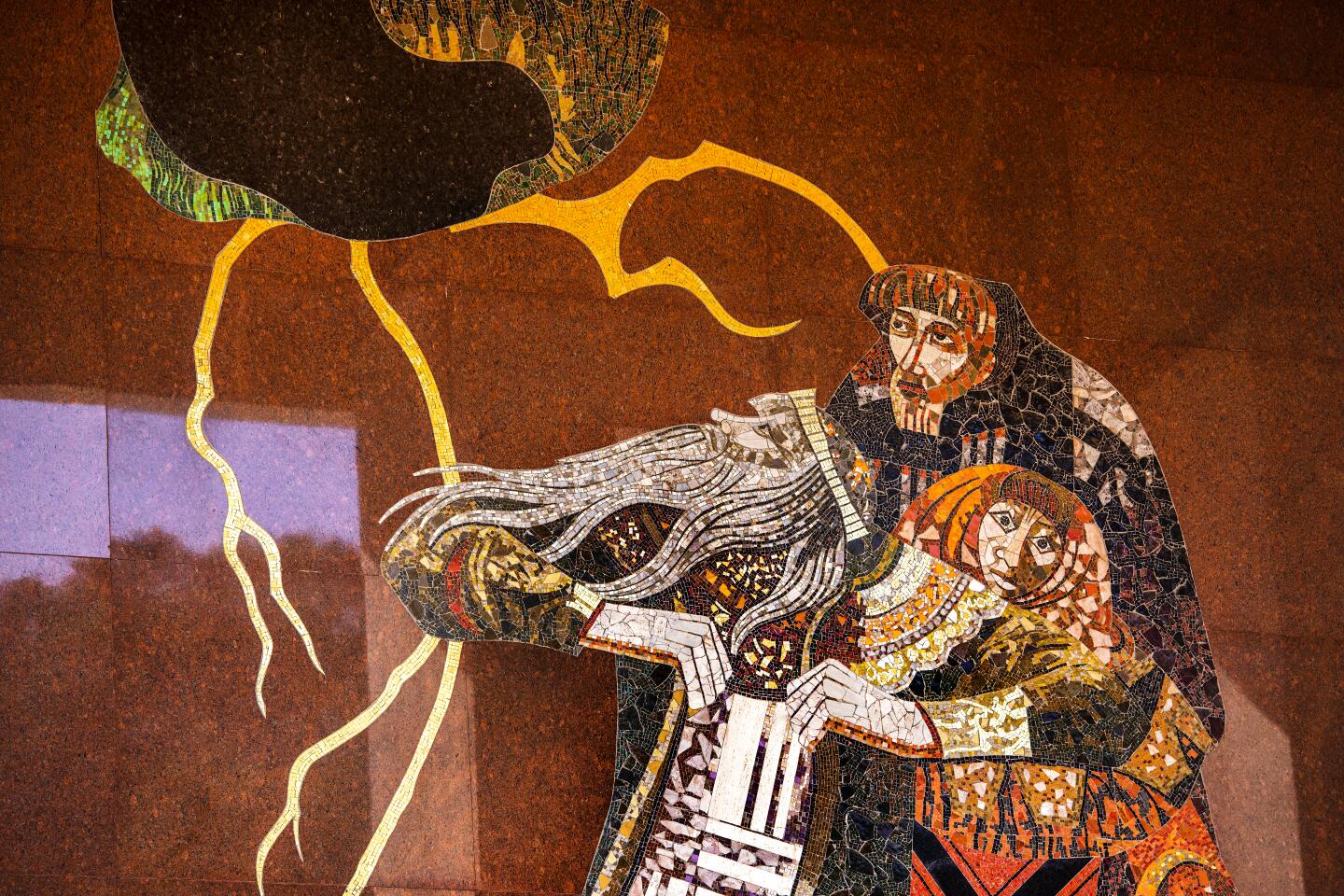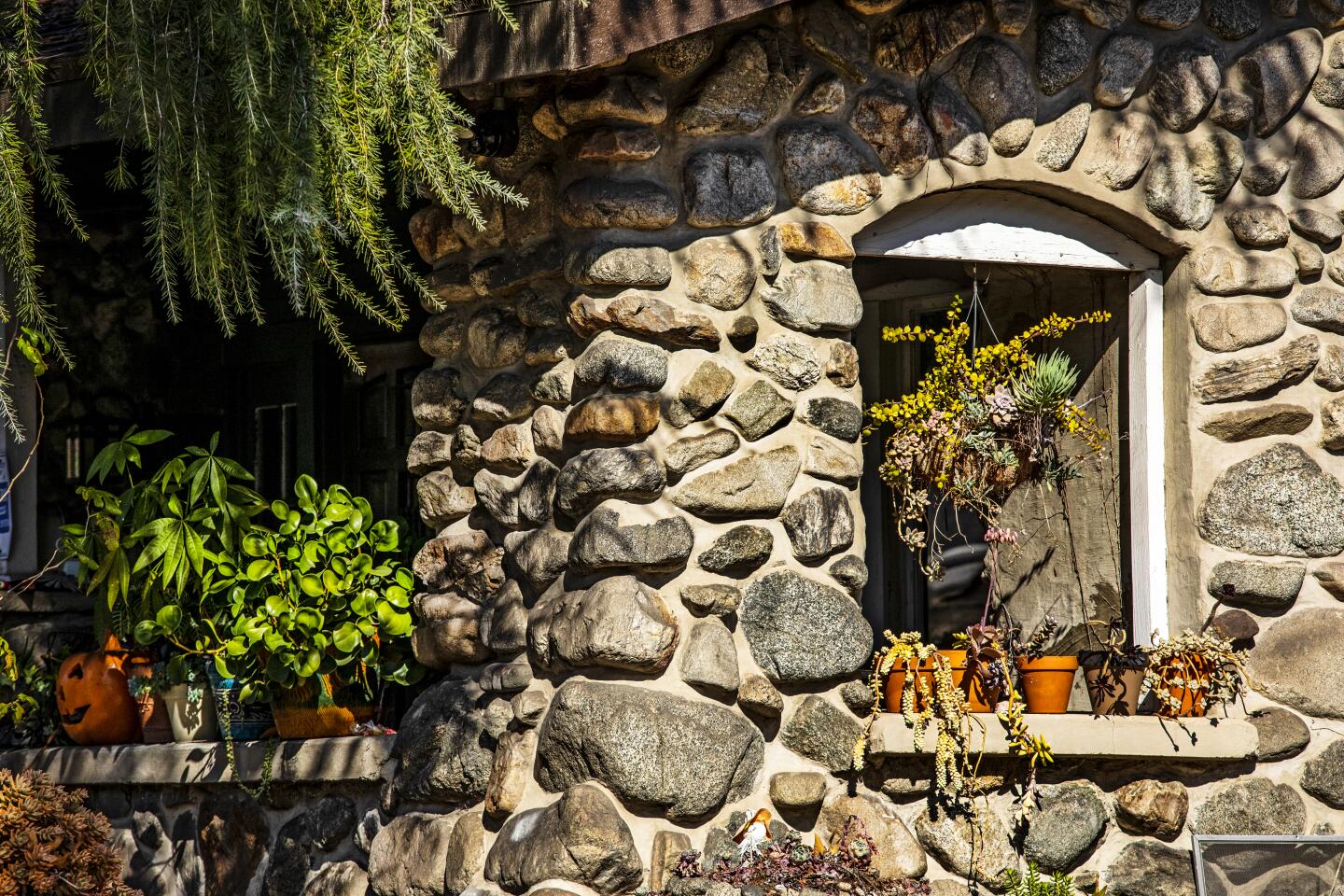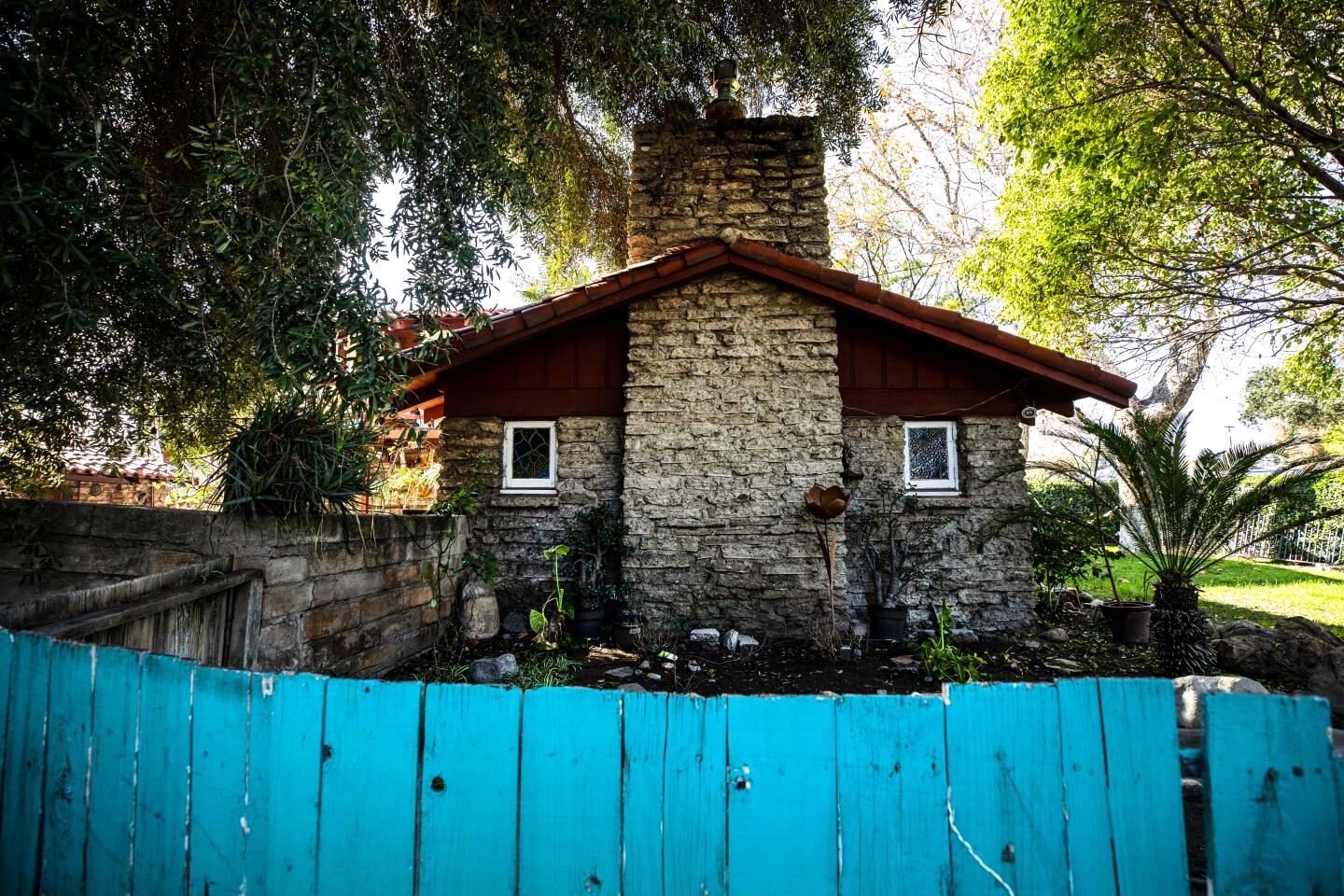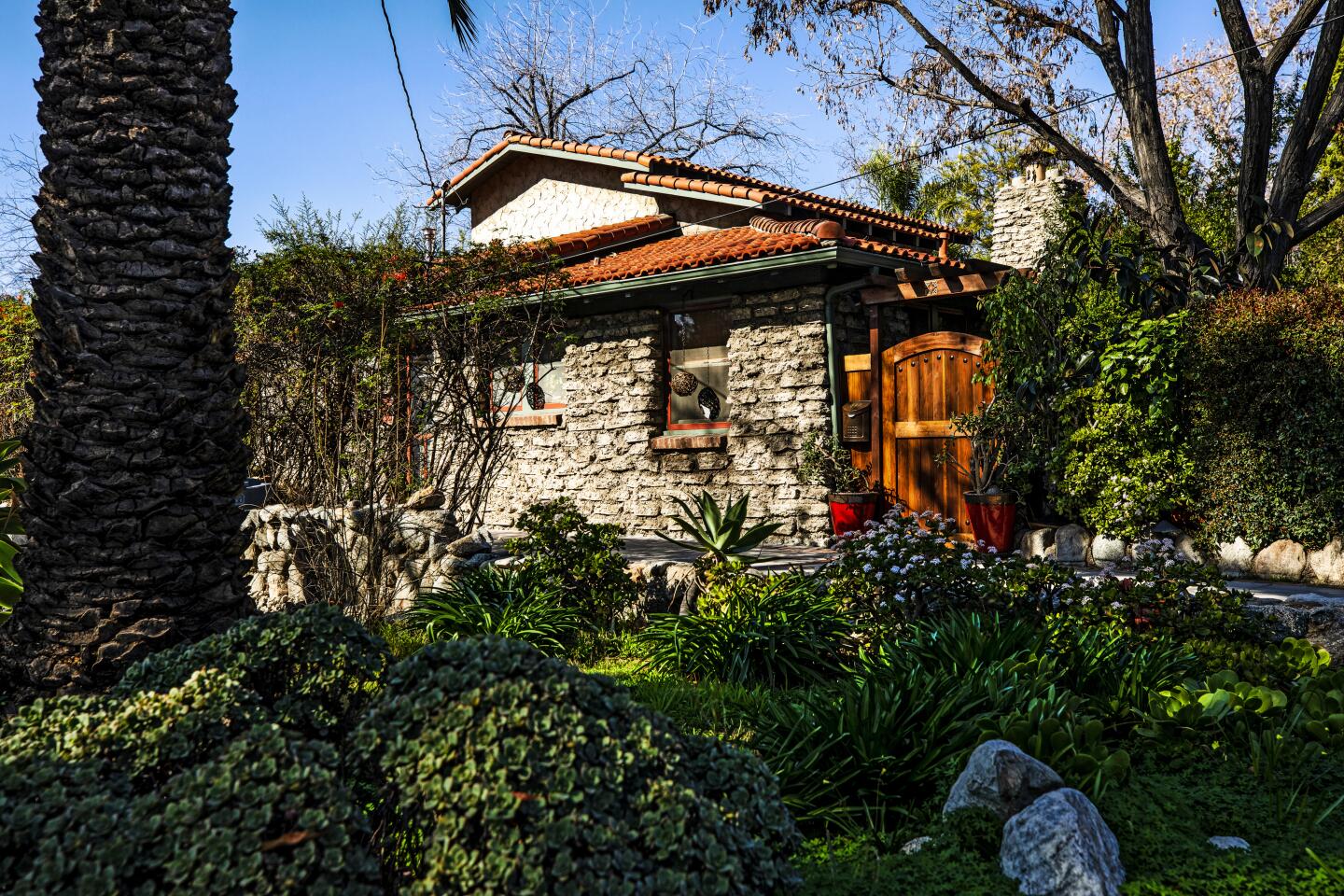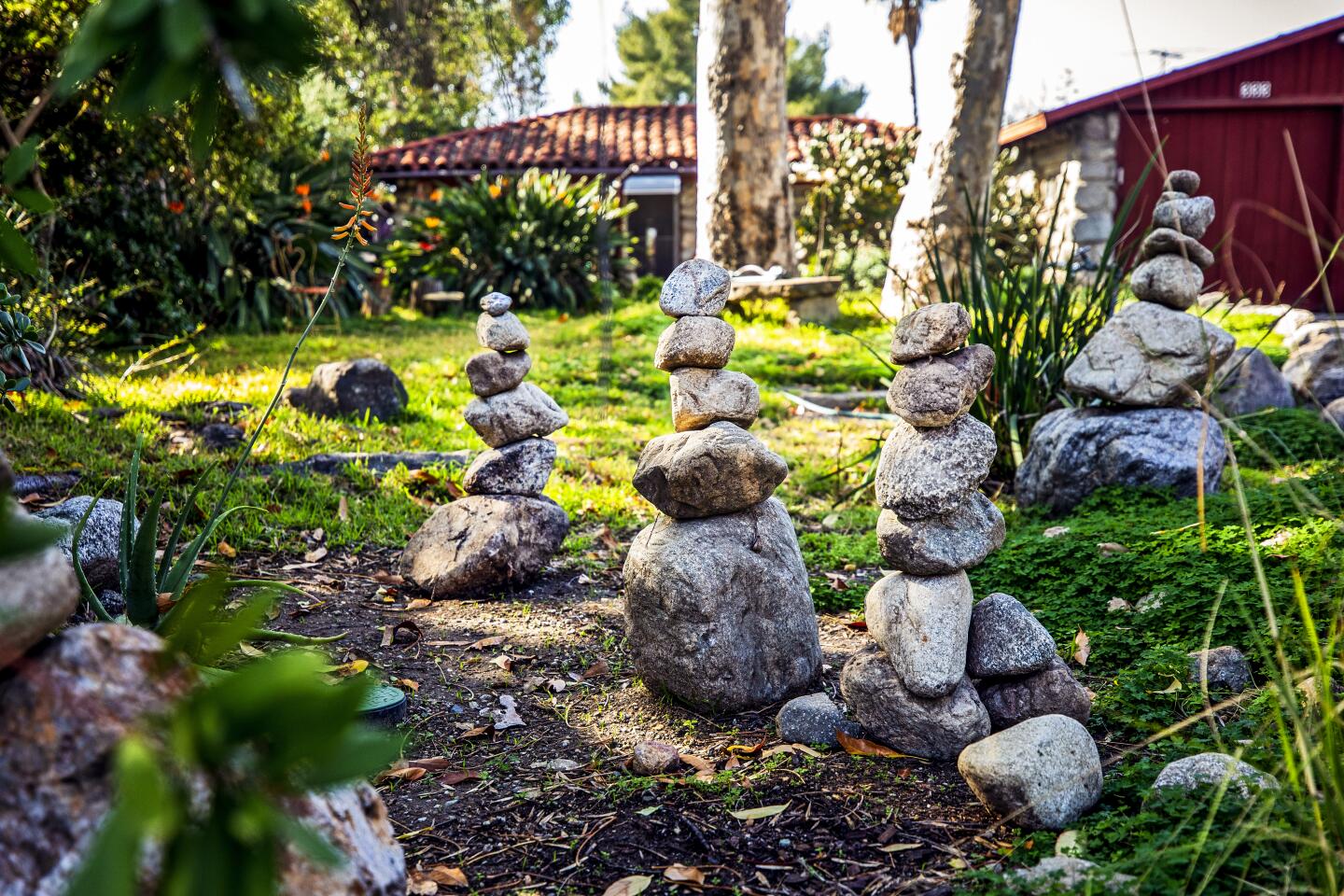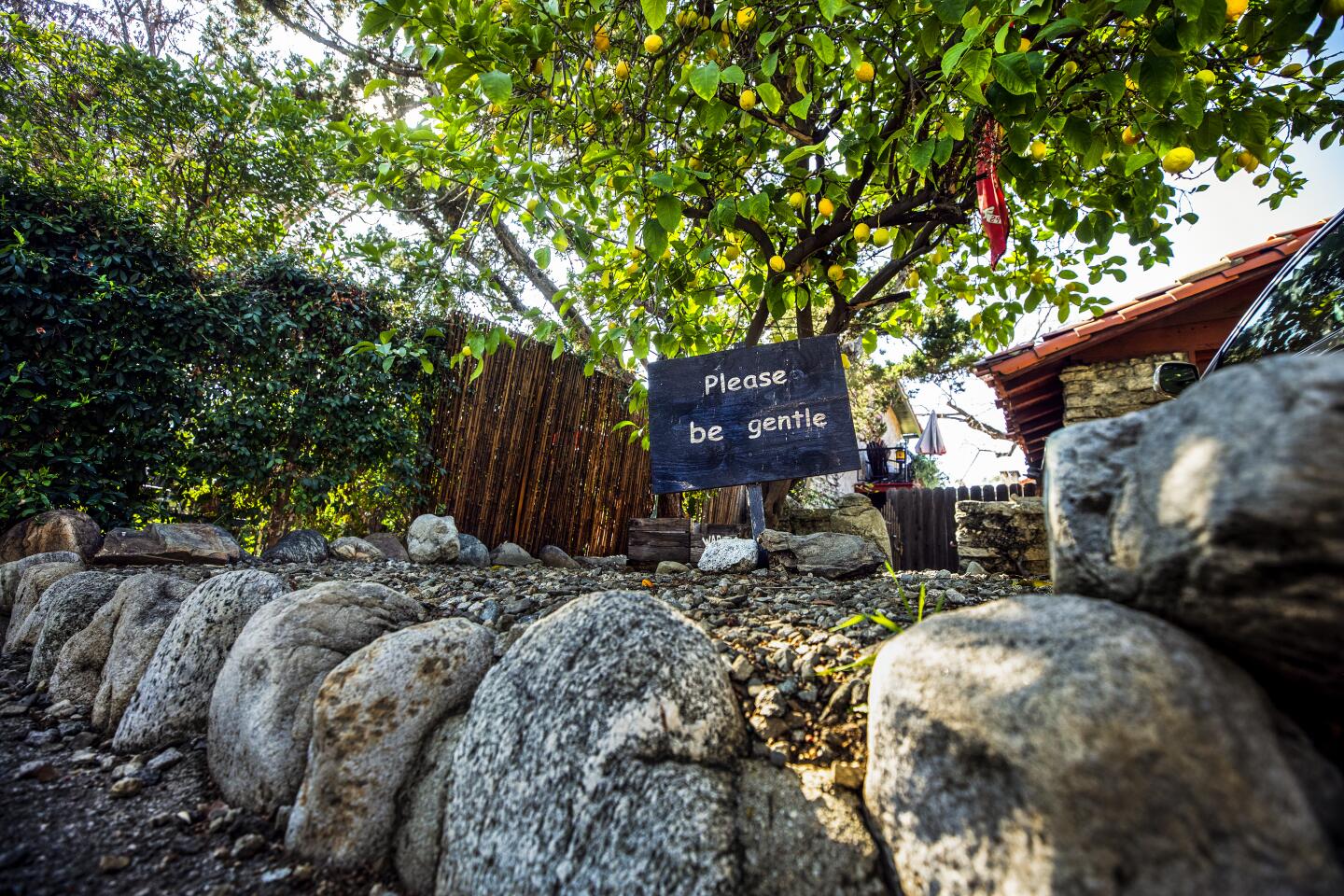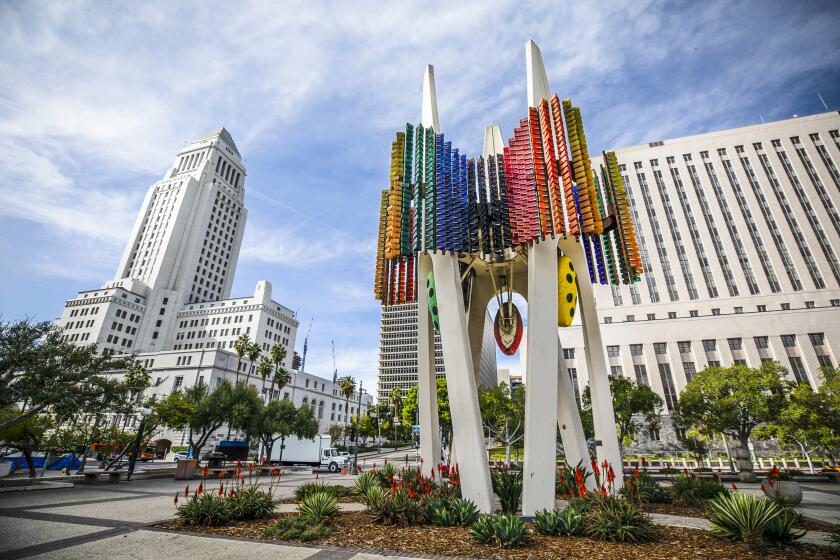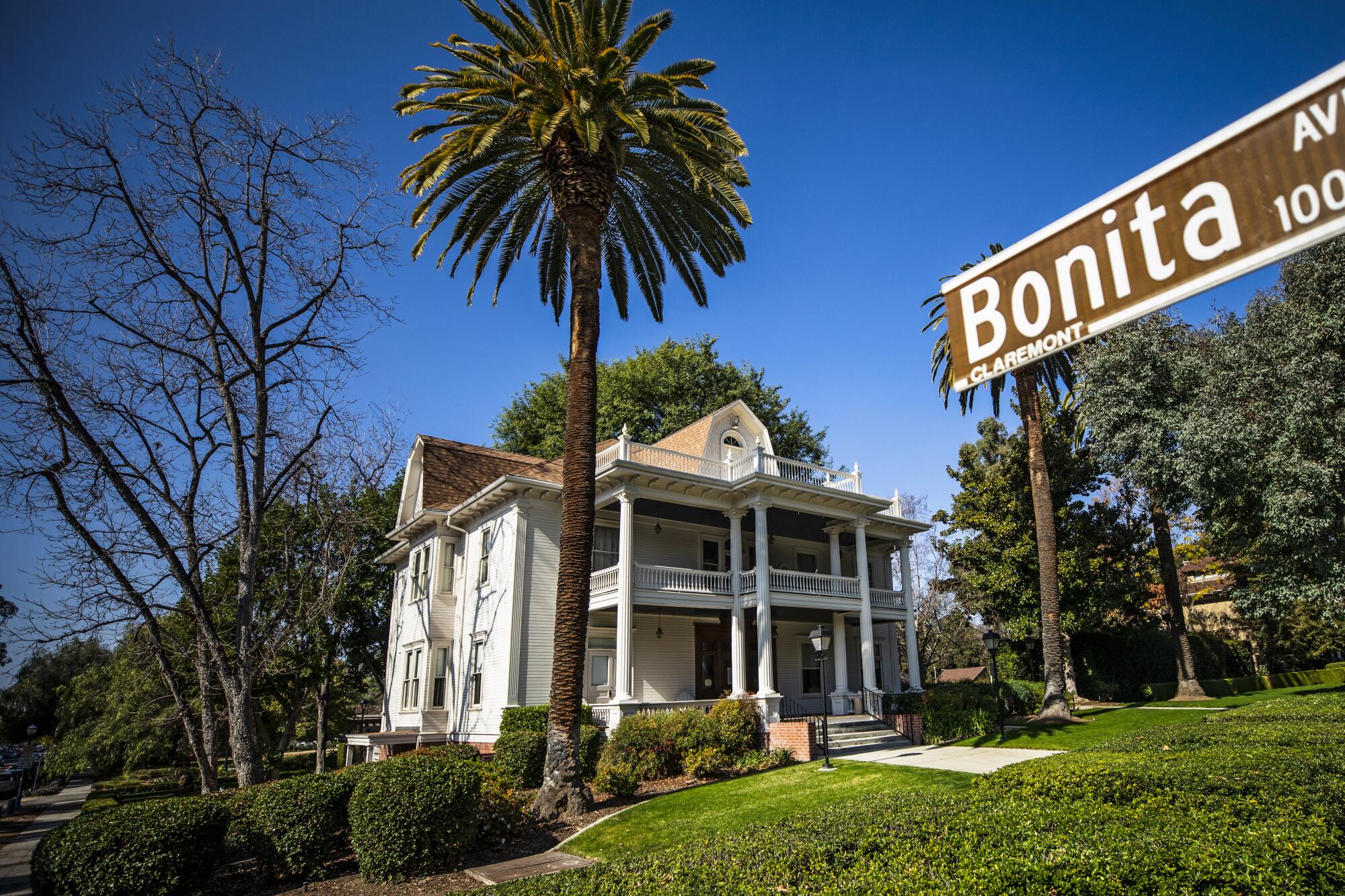
Claremont, on the eastern edge of L.A. County, is home to historic architecture along its streets and on the campuses of the Claremont Colleges. It’s a good time for a driving tour of city landmarks while students are home, taking classes online. All those empty parking spots mean you can also explore on foot.
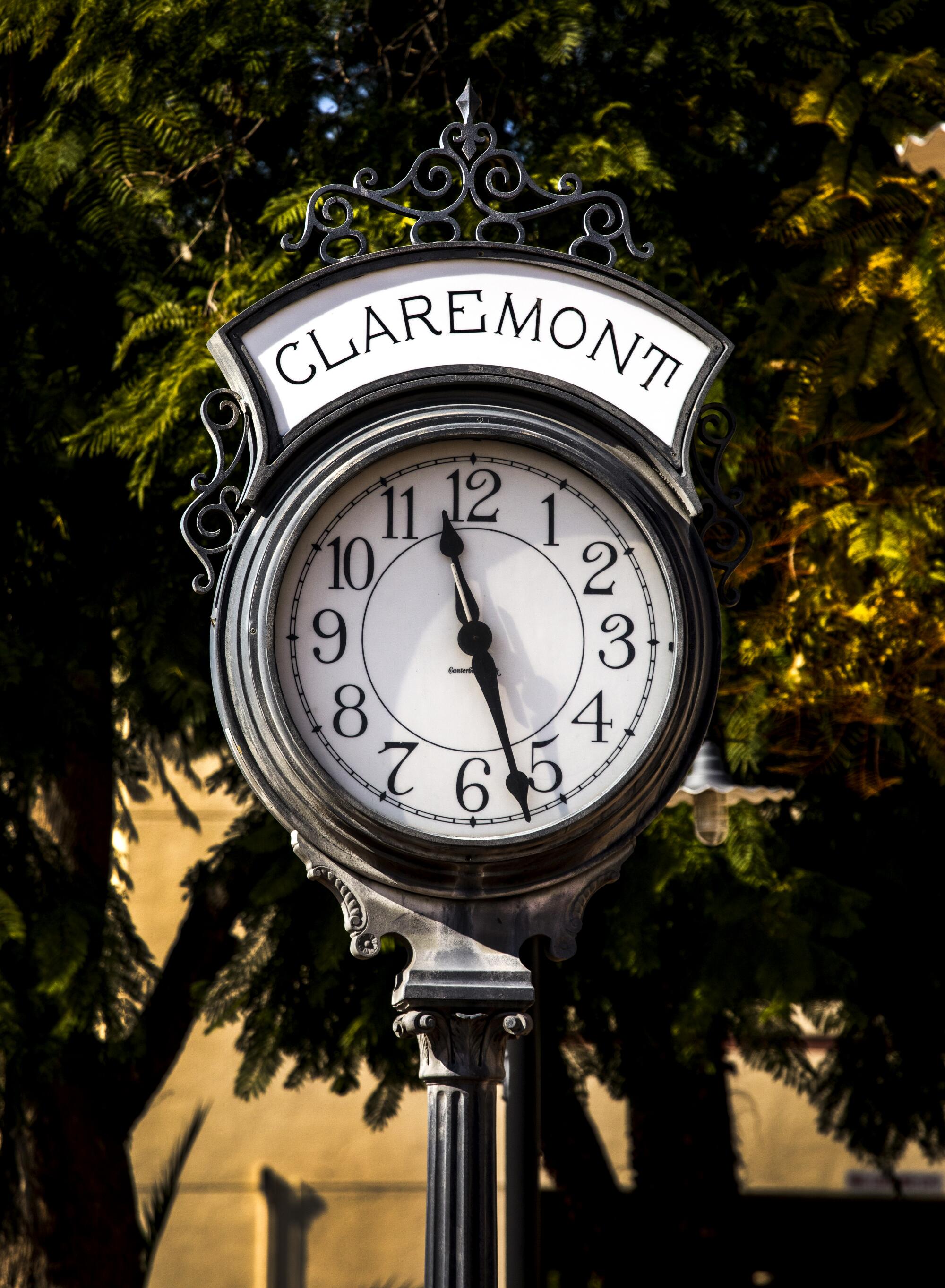
Throughout the city, you will see Victorian, Spanish Colonial Revival and Craftsman buildings as well as whimsical folk architecture. Thanks to Claremont Heritage, the city’s nonprofit preservation organization, many of the landmarks have been saved from the wrecking ball. For more information, go to claremontheritage.org.
Start your tour where Claremont began in 1887 on the Atchison, Topeka and Santa Fe Railroad route into California. From Los Angeles, take Interstate 210 east to the Towne Avenue exit in Claremont. Turn right and drive south to Foothill Boulevard. Turn left and continue to Indian Hill Boulevard, then turn right on Indian Hill Boulevard to 1st Street. Turn left and drive 1½ blocks.
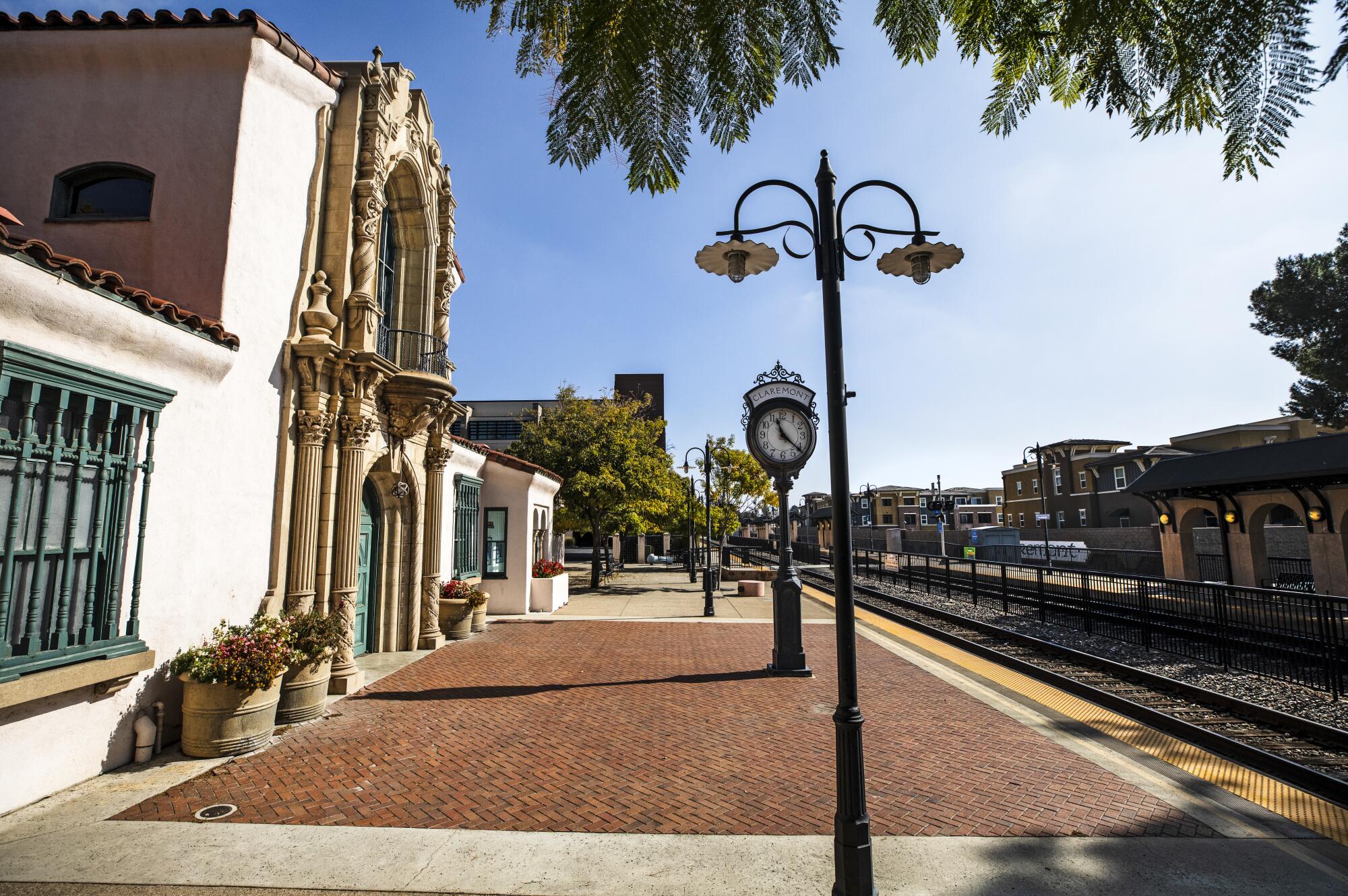
The Spanish Revival-style Claremont Depot (110 W. 1st St.) was built in 1927 to replace the original wooden Victorian station. The best place to admire the details — gabled red tile roof, Moorish arches, elaborate concrete Churrigueresque trim — is from the side that faces the tracks. Today, it’s where passengers on Metrolink commuter trains check the time on the towering cast-iron clock. The depot was listed on the National Register of Historic Places in 1982 and now is home to the Claremont Museum of Art.
A beloved remnant of Claremont’s agricultural past borders the railroad tracks a few blocks west of the depot. In the 1920s, the Claremont Packing House (532 W. 1st St.) was one of four agricultural co-ops that packed and shipped the bounty of the surrounding citrus orchards throughout the U.S.
Cruise around Pasadena, San Diego, Downtown L.A., with these driving tours
Suburban housing eventually replaced the orchards, so the city purchased the building to save it. In 2007, a restoration preserved the three-story-tall sawtooth skylights, wooden floors and other original features. What was once one of the region’s biggest employers is now a lively community gathering spot with restaurants, artists’ studios, offices and boutiques.
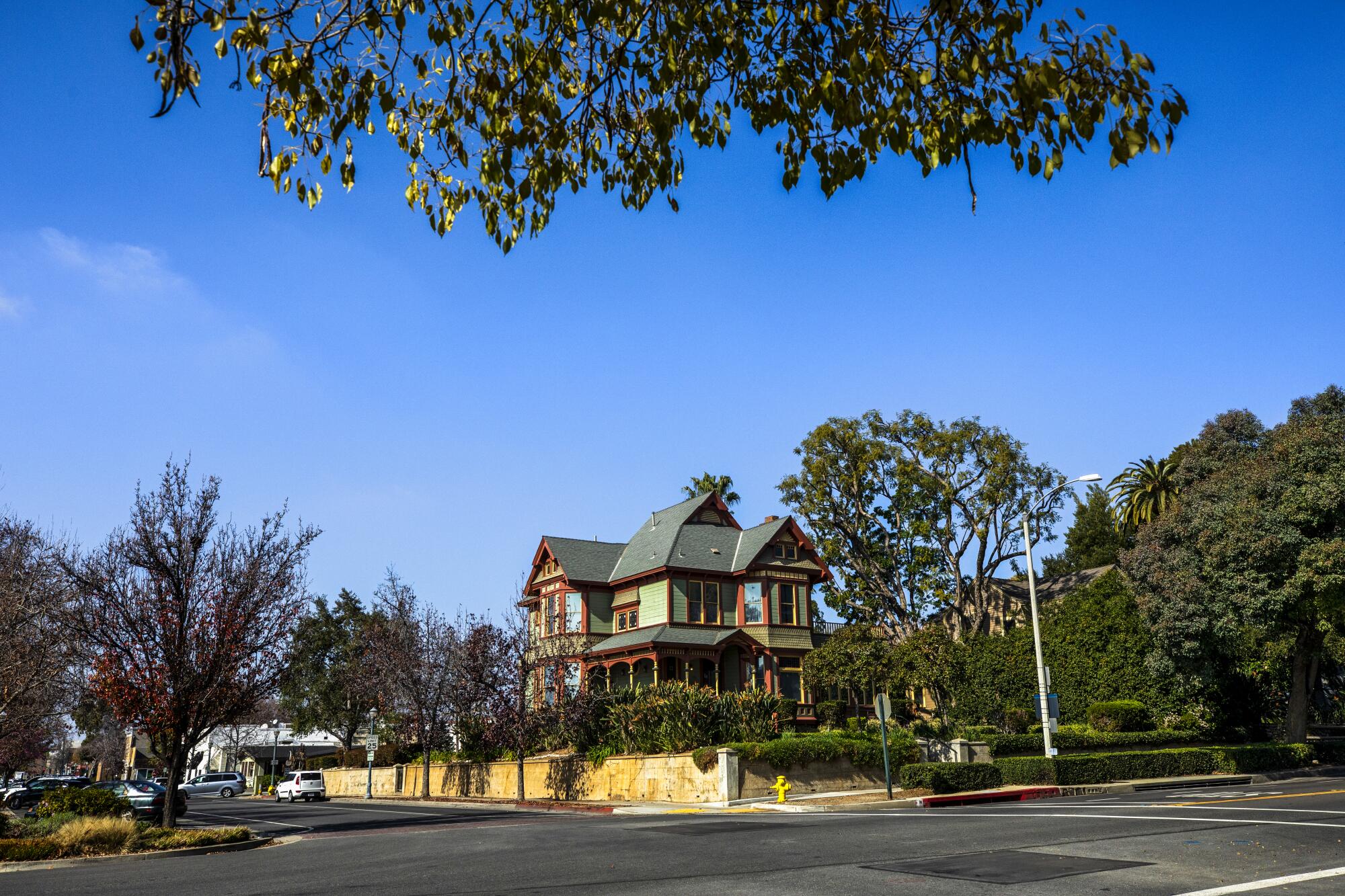
Double back on 1st Street past the Claremont Depot and turn left onto North College Avenue. On the corner of what’s called “Victorian Row” stands one of the city’s oldest houses. Sumner House (105 N. College Ave.) was built in 1887 for Charles Burt Sumner, one of the founders of Pomona College, then in Pomona.
The college moved to Claremont in 1888, and in 1901, the house followed on a horse-drawn moving van that took six weeks to travel the 1½ miles. (The Sumner family occupied the house during the move.) A classic Victorian, the house features towers, gables and leaded-glass bay windows, elaborate exterior wood ornamentation and a wraparound porch. Today, the Sumner House hosts VIP guests to the Pomona campus.
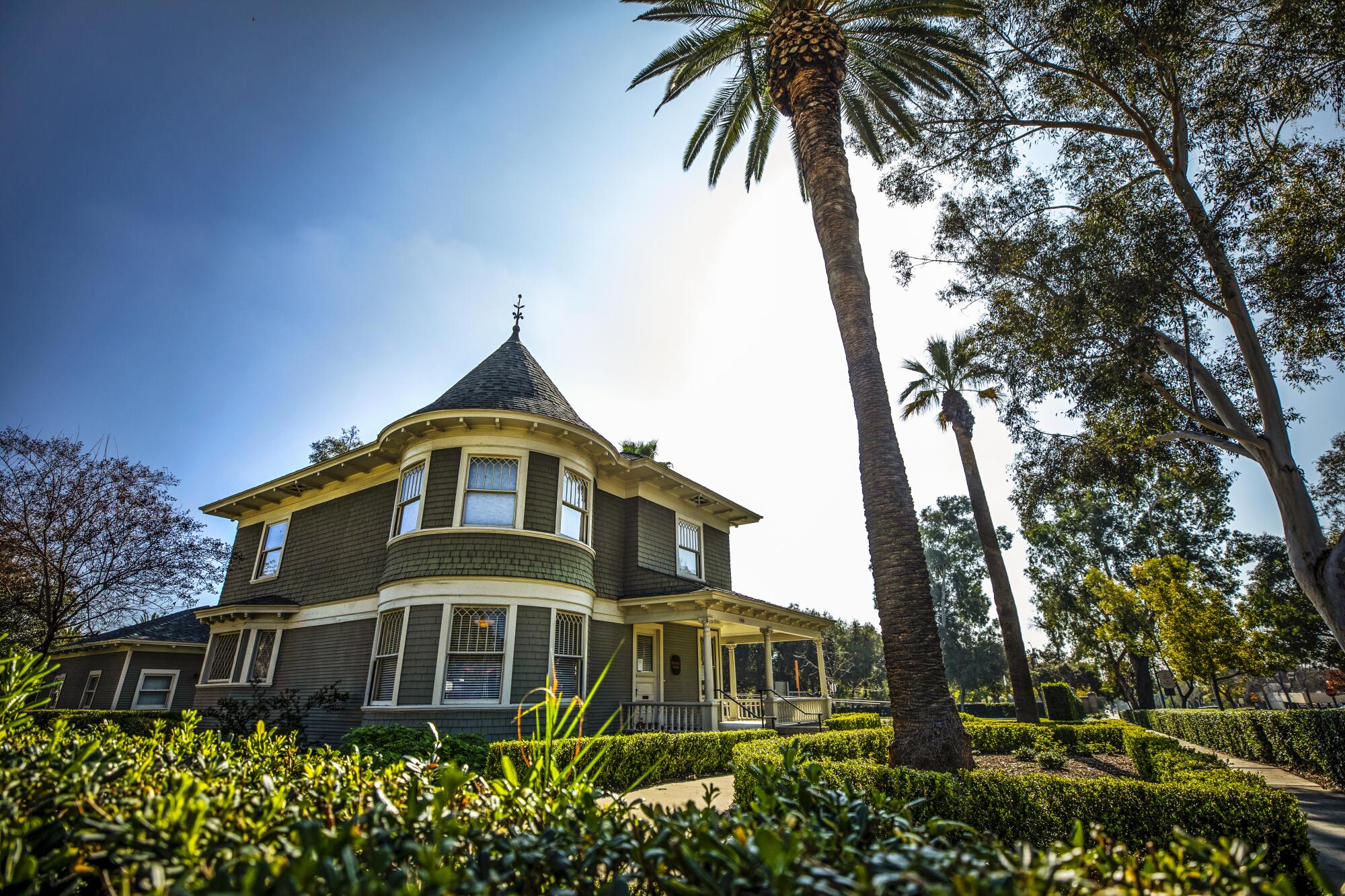
Across the street is Renwick House (146 N. College Ave.), a late Victorian with a two-story turret, a large bay window and a wraparound porch. The house was built by Helen Renwick, a widow from Iowa who moved to Claremont to raise her son and send him to Pomona College. Like the Sumner House, the Renwick House was moved here from another location, but the job was accomplished in only a few hours in 2017. Its old location was across the street, site now of Pomona College’s Benton Museum of Art.
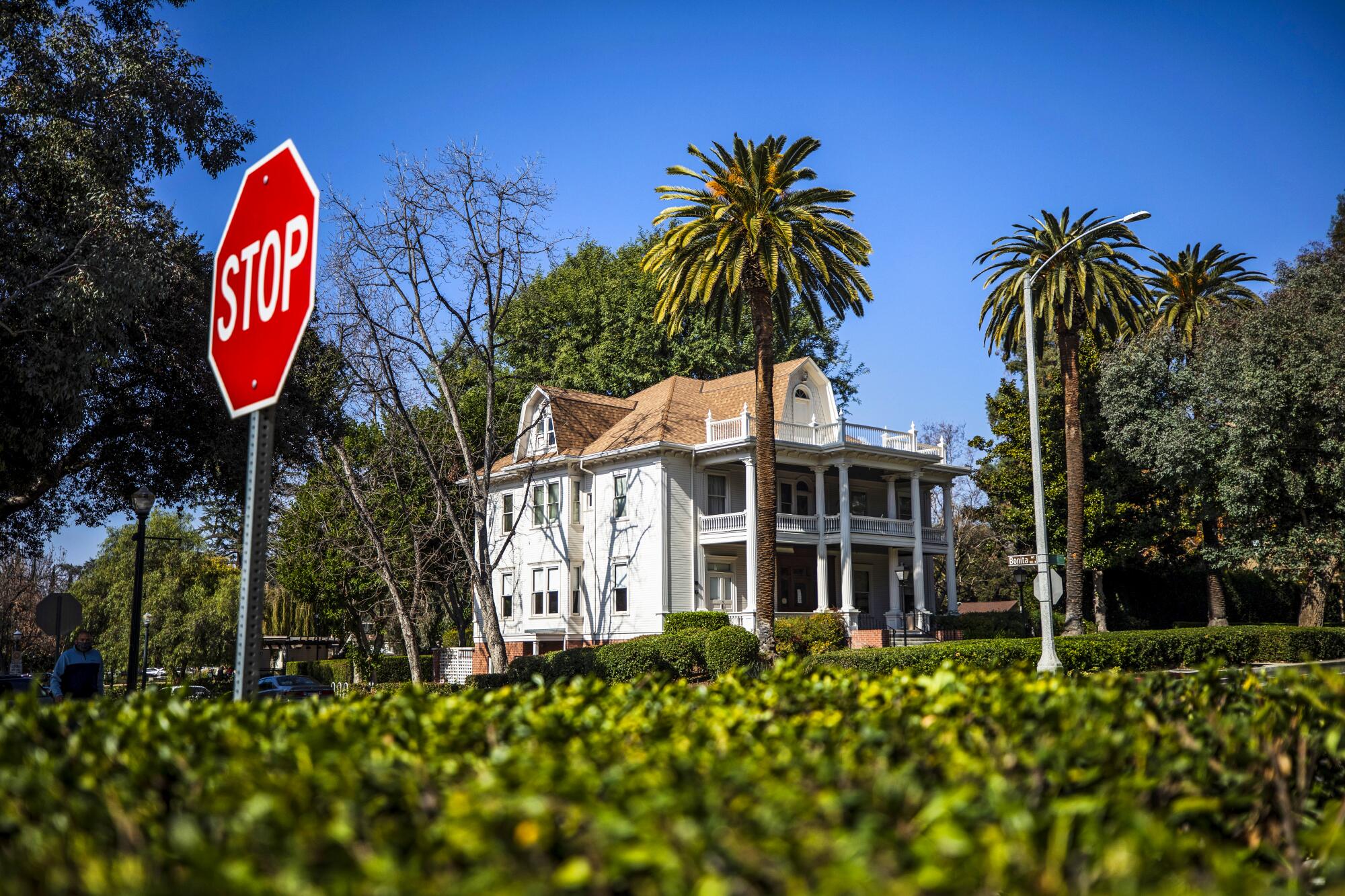
Up the street and on the left is the Seaver House (305 N. College Ave.). The Greek Revival-style home was built in 1900 in Pomona for Carleton Seaver, a major donor to Pomona College whose six children attended the school. Seaver House was moved here from Pomona in 1979 to serve as the Pomona College Center for Alumni Affairs. Note the imposing two-story classical columns and third-story gables.
Bridges Auditorium (450 N. College Way) is a block north at the rear of Pomona’s tree-shaded Marston Quad. Architect William Templeton Johnson, famous for San Diego’s Museum of Art and Natural History Museum, designed the 1931 concert hall in a majestic Renaissance Revival style with Art Deco elements.
With seating for 2,500, the auditorium for decades was the largest east of Los Angeles and hosted world-class symphony orchestras. In 1975, in honor of a Frank Zappa concert there, two Pomona students pulled a prank that’s still talked about. The names of five famous composers — Chopin, Schubert, Wagner, Bach and Beethoven — decorate the frieze above the auditorium entrance. In the middle of the night, the pranksters put a Styrofoam panel with Zappa’s name over Chopin’s.
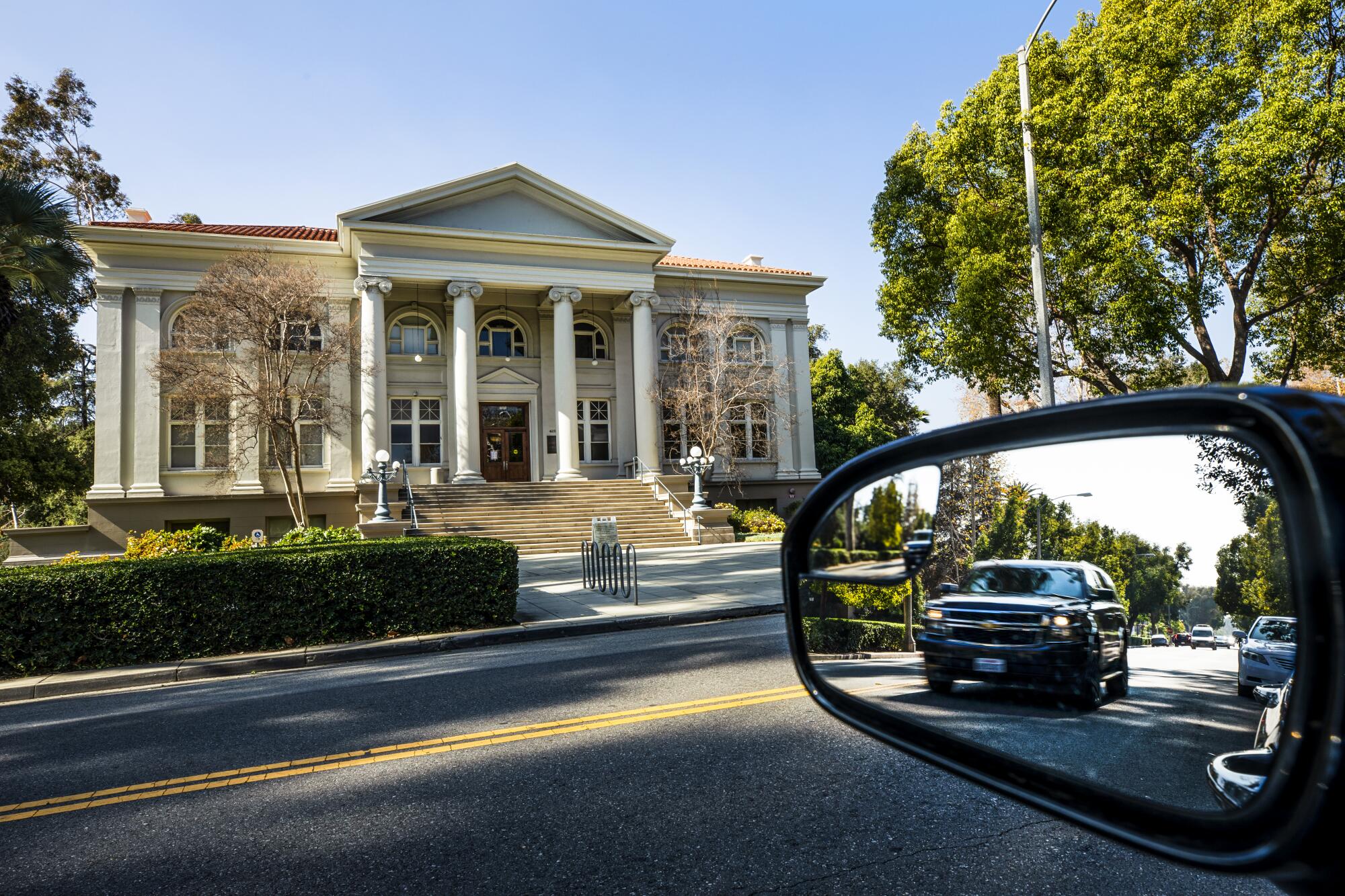
The Classical Revival-style Carnegie Library (425 N. College Ave.) was built for Pomona College and the city of Claremont in 1906 with support from steel magnate and philanthropist Andrew Carnegie, who at the time was donating to the construction of thousands of libraries in cities throughout the U.S. Claremont’s Carnegie Library building is one of 12 designed by Franklin Pierce Burnham — and one of only three he designed that are still standing. Today, the building houses Pomona College offices.
A few blocks north, on the corner of North College Avenue and 8th Street, architecture buffs will notice the familiar outstretched eaves, overhanging wood-shake roof and broad porches of a bungalow designed by Charles and Henry Greene, who made the Craftsman Movement famous. The 1903 Darling Residence (807 N. College Ave.) was the Greene brothers’ first commission outside Pasadena, where today the 1908 Gamble House showcases their work. It is the only Greene & Greene house in Claremont.
Continue north on College Avenue to 10th Street and turn right. On the left is the Garrison Theater (231 E. 10th St.), an auditorium designed in 1963 by architect David Underwood and artist Millard Sheets for use by the Claremont Colleges.
Sheets taught art at Scripps College and is best known for mosaics illustrating local history that he designed for more than 80 branches of Home Savings & Loan in Southern California. Note the shimmering mosaic that Sheets created for the façade of the Garrison. It depicts scenes from Shakespeare’s “Antony and Cleopatra,” “Romeo and Juliet” and “Macbeth.”
Make a U-turn and return to North College Avenue. Drive south to Arrow Highway and turn left. At South Mills Avenue, turn right.
There are no sidewalks here, so you may want to drive back and forth several times to get a good look at the 15 folk architecture-style houses, from 290 S. Mills Ave. to 370 S. Mills Ave., on both sides of the street. The hand-crafted homes comprise the Russian Village District, which was listed in the National Register of Historic Places in 1978.
The story behind them starts with Konstanty Stys, a Polish (not Russian) immigrant, and others out of work during the Great Depression. With no money or formal training in design and construction, they built the houses using salvaged and recycled materials found in wrecking yards as well as debris from the 1933 Long Beach earthquake. They also used a lot of the local fieldstones, a.k.a. “Claremont potatoes.”
The rounded, greyish-white rocks, which range in size from pebbles to boulders, were washed down from the nearby San Gabriel Mountains thousands of years ago. Farmers excavated them to plant the citrus orchards that bolstered Claremont’s economy for decades.
A downtown hotel that resembles a rocket ship about to blast off, the Brady Bunch house and a Buddhist temple are part of the decade’s glorious mishmash of buildings.
More to Read
Sign up for The Wild
We’ll help you find the best places to hike, bike and run, as well as the perfect silent spots for meditation and yoga.
You may occasionally receive promotional content from the Los Angeles Times.
